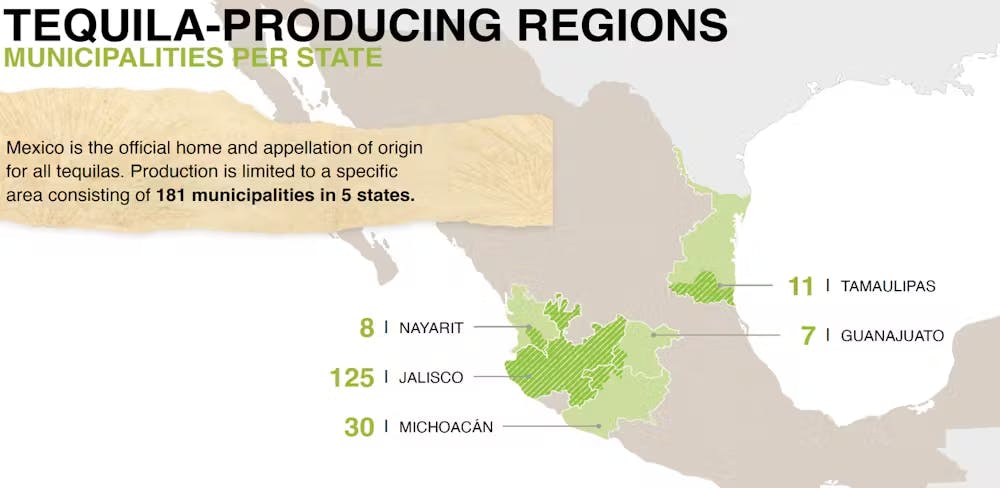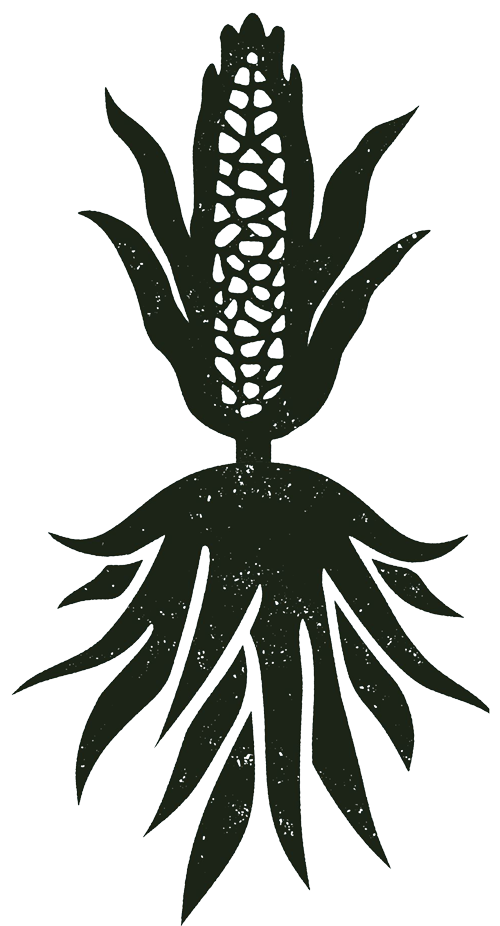History of Tequila Production
Tequila’s roots stretch back to the Aztecs, who made a fermented drink from agave called pulque. When Spanish conquistadors arrived in the 16th century, they began experimenting with distillation, creating a stronger spirit from the native agave plant, which led to mezcal. By the 17th century, the town of Tequila in Jalisco, Mexico, became famous for a unique variation made exclusively from Weber Blue Agave, which flourishes in Jalisco’s volcanic soil. Over time, this spirit became known as tequila, named after the town itself.
The process evolved into the sophisticated craft we know today, involving the slow growth of agave for 7–10 years, roasting in brick ovens or autoclaves, and pressing with traditional tahona stone wheels or mechanical shredders. Double distillation refined the spirit’s purity, while aging techniques—Blanco, Reposado, Añejo, and Extra Añejo—brought complexity and depth. Today, Mexican law ensures that only spirits made from Weber Blue Agave in designated regions can be called tequila, preserving its authenticity and heritage.
1. Introduction to Agave
Agave is a succulent plant native to Mexico and Central America, crucial for tequila and mezcal production. Key points include:
Primary Ingredient: Only blue Weber agave (Agave tequilana) can be used to make tequila, and it grows mainly in specific regions of Mexico.
Plant Structure: Agave plants mature slowly, taking 7–10 years to develop the sugars in the piña (i.e. heart/core), which are essential for tequila production.
Varieties for Spirits: Tequila exclusively uses blue Weber agave, but mezcal can be made from different agave types like Espadín, Tobalá, and Madrecuixe, each offering unique flavors.
Uses Beyond Tequila:
Agave syrup serves as a natural sweetener.
Agave fibers are used for textiles, ropes, and paper.
2. Tequila Regions and Flavor Profiles
Tequila is a spirit native to Mexico, made exclusively from the blue Weber agave plant. Only regions with a Denomination of Origin (DO)—specifically Jalisco and certain areas in Guanajuato, Michoacán, Nayarit, and Tamaulipas—can legally produce tequila. This designation covers 181 municipalities across five states, ensuring tequila’s authenticity.

The agave growing region, or terroir, influences tequila’s flavor:
Los Altos (Highlands): Known for sweeter, fruitier, and floral tequilas. Brands include El Tesoro, Patrón, and Cazadores.
Elevation: Around 6,000 feet above sea level.
Soil: Red, iron-rich volcanic soil, slightly more acidic with abundant minerals.
Climate: Cooler with more rainfall, resulting in larger agave plants with higher sugar content.
Tequila Profile: Highland tequilas are smoother, with delicate, softer, and sweeter notes.
El Valle (Lowlands): Known for earthy, vegetal, herbaceous, and spicier tequilas with a strong agave presence. Brands include Herradura, Cuervo Tradicional, and Casa Noble.
Elevation: Closer to sea level, around 3,000–4,000 feet.
Soil: Rich in clay and rocks, with fewer minerals.
Climate: Warmer and drier, leading to smaller agave plants with more intense flavors.
Tequila Profile: Lowland tequilas are bolder, with a robust, earthy, and herbal character.
General Terroir Requirements for Blue Weber Agave:
Temperature: Thrives in temperate to warm climates, ideally between 20°C and 30°C (68°F to 86°F).
Sunlight: Requires abundant sunlight for optimal growth.
Drainage: Needs well-draining soil to prevent root rot and support healthy growth.
Water: Although drought-tolerant, blue Weber agave benefits from occasional rainfall, especially in early growth stages.
3. Tequila Production Process
The production of quality tequila involves several steps, each affecting the flavor and profile:
Step 1: Cultivate the Agave Plant - Only in regions with a DO
Selecting Quality Agave Plants: Cultivation begins with planting healthy hijuelos (baby agave plants), which take about 7–10 years to mature. Tequilas made from well-tended, mature plants yield richer flavors.
Step 2: Harvest the Agave Plant - Once the piña is mature!
Maturity: Agave plants are harvested only when fully mature (7–10 years).
Selection: Premium tequilas use mature plants, while younger agave may result in milder flavors.
Step 3: Cook the Agave Plant - Bake it or steam it to caramelize the sugars.
Brick Ovens (Hornos): Traditional, slow-cooking method that produces caramelized flavors over 24–48 hours.
Autoclaves: High-pressure steam ovens cut cooking time to 7–12 hours, preserving more green, vegetal notes.
Diffusers: Industrial method where agave is shredded before cooking, rapidly extracting sugars but yielding milder flavors. The application here can vary by distillery. Diffusers use water in high pressures to shred but some also use the water at high temp to essentially “boil” the tequila which softens the fibers enough to extract the sugars but doesn’t release as much flavor from the sugars.
Step 4: Crush the Agave Plant - Extract the juice from the piña.
Tahona (Stone Wheel): A volcanic stone wheel that crushes agave, preserving complex flavors.
Roller Mills/Mechanical Shredders: Shred and press agave quickly, resulting in lighter flavors.
Step 5: Ferment the Juice - The yeasts convert the juice into alcohol.
Open-Air Fermentation: Traditional method in open vats that encourages wild yeast growth, adding complex, terroir-driven flavors. Not exclusive to wild yeasts. Increased evaporation can lead to lighter aromas. More controlled environment for temp.
Closed Fermentation with Added Yeasts: Quicker and more consistent but less complex in flavor. More concentrated aromas. Can often overheat. Closed tends to be less vulnerable to losing flavor in its controlled vats/tanks. Can still be complex in flavor. Really that'll depends on whether its being fermented in oak or stainless steel.
With Agave Fibers: tends to operate similarly to closed fermentation. The fibers create a seal over the top of the fermented juices while also making it susceptible to nearby agriculture like fruit trees, flowers.
Fermentation with Agave Fibers: Adds earthy flavors and richness.
Variables: open or closed, with or without fibers, wild or natural yeats, with all you can control the preferred aroma/flavor.
Step 6: Distill the Alcohol - The Alcohol is distilled twice to produce clear silver tequila.
Copper Pot Stills: Common in small-batch production, providing rich and smooth flavor. Copper is a catalyst for chemical reactions that remove sulfur compounds and undesirable flavors from the distillate. This helps produce a smoother, cleaner spirit.
Stainless Steel Stills: Neutral flavor, ideal for larger batches. Commonly also a type of continuous distillation which can often be the reason the spirit ends up with a neutral flavor. Each column holds panels which are placed intentionally to "correct" an undesired characteristic which is subject to the master distiller's preference.
Double Distillation: Standard for tequila, ensuring purity. Some tequilas undergo a third distillation for extra smoothness.
Step 7: Aging Process - Tequila is aged in oak barrels to develop flavor and color.
The containers can vary from as small ass 200L barrels (more commonly used for craft tequila producers) to 20k liter "pipones" aka large oak vats often used by mass-producing companies.
Blanco: Unaged or lightly rested, for pure agave flavors. They can technically be aged up to 2 moths. Anything over would be reposado. Most companies just don't find it necessary.
Reposado: Aged at least two months, adding mild oak notes.
Añejo: Aged at least one year, yielding richer, more complex flavors.
Extra Añejo: Aged three years or more, resulting in deep, nuanced flavors.
4. Tequila Types: Mixto vs. 100% Agave
Mixto Tequila:
Composition: Contains at least 51% blue Weber agave sugars, with up to 49% other sugars (e.g., cane or corn). Often found to be using additives to impart more flavor where production did not preserve it.
Flavor and Quality: Mixto tequilas have a lighter, less complex flavor compared to 100% agave tequilas. Often considered lower quality due to the use of non-agave sugars.
Labeling: Mixto tequilas cannot specify "100% agave" on the label.
Typical Use: Commonly used in cocktails and mixed drinks for its lighter flavor and lower cost.
100% Agave Tequila:
Made entirely from blue Weber agave sugars and must be bottled in Mexico, offering a pure agave flavor. Preferred by customers and enthusiasts for its superior quality.
5. Tequila Regulations and Certifications
Authentic tequila must adhere to strict Mexican regulations to protect its quality and consistency.
Denomination of Origin (DO): Only tequila produced in designated regions (Jalisco and parts of Guanajuato, Michoacán, Nayarit, and Tamaulipas) can be labeled as tequila.
Tequila Regulatory Council (CRT): Ensures standards for authenticity and quality are met. CRT regulation limits ALL tequila production to the use of additives. a MAX of 1% of total volume can be added. Anymore would need to be stated on the bottle. The CRT recently began to provide "additive free" tequilas with the seal, but that's still in the very beginning stages. Tequila Matchmaker however has a program as well which you can find directly on their website.
Tequila NOM (Norma Oficial Mexicana): Each certified tequila has a NOM number on its label, guaranteeing its origin and quality.
Additional Certifications:
Organic: No synthetic pesticides or fertilizers.
Kosher: Meets Jewish dietary standards.
Fair Trade: Supports ethical farming and production practices.
6. Factors Affecting Tequila Pricing
Agave piñas can often fluctuate in market price depending on seasonality and/or anticipated harvests. That can also play a big role in pricing. Several factors contribute to tequila’s price, including production quality, aging, and branding:
Agave Maturity: Premium tequilas use mature agave, which yields richer flavors.
Production Techniques: Traditional methods (like brick ovens and tahona crushing) are more labor-intensive and add to the cost.
Aging: Aged tequilas (Reposado, Añejo, Extra Añejo) spend time in barrels, adding complexity and cost.
Limited Edition and Small Batch: Exclusive releases are often pricier.
Packaging and Branding: Premium packaging and celebrity endorsements can also increase prices.

